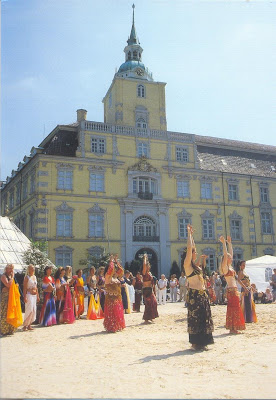Oldenburg is an independent city in the state of Lower Saxony, Germany. During the French annexation (1811–1813) in the wake of the Napoleonic war against Britain, it was also known as Le Vieux-Bourg in French. The city is situated at the Rivers Hunte and Haaren, in the northwestern region between the cities of Bremen in the east and Groningen (Netherlands) in the west. It has a population of 162,173 (as of 2010), which makes it the fourth biggest city in Lower Saxony after Hanover, Braunschweig and Osnabrück. In German, the formal name isOldenburg (Oldenburg) or Oldenburg (Oldb) (spoken: Oldenburg in Oldenburg) to distinguish it from the city of Oldenburg in Holstein.
The city is the place of origin of the House of Oldenburg. Before the end of the German Empire (1918), it was the administrative centre and residence of the monarchs of Oldenburg.
The site of the splendid Oldenburg palace used to be the location of a moated castle. The palace as it now stands was built by Count Anton Günther (1583-1667). From 1607 to 1615 he had the medieval-style castle converted into a splendid Renaissance-style palace. From then on it served as the residence of all counts and grand dukes of the city.
The appearance of the palace also changed frequently in the following centuries. During the period of Danish rule from 1737 to 1753 the palace underwent a great deal of conversion work: The shape of the roof was changed, the tower entrance was closed and a main gate was built instead. In addition a north-east wing was built from 1774 to 1778. It served to house the Danish governor and minister Friedrich Lewin Graf Holmer. Duke Friedrich August probably named this wing the "Holmerflügel" after him. His successor Duke Peter Ludwig had the two-floor "library wing" built and had the inside of the palace refurbished by the court painter Heinrich Wilhelm Tischbein (1751-1829) in a classicist style. In 1894 the dilapidated "Kanzlei-Flügel" was torn down.
Since 1921 the Oldenburg palace has been part of the Federal State Museum for Art. The square in front of the castle is often used as a meeting place for different cultures as depicted on the card. Thank you Marco.

No comments:
Post a Comment